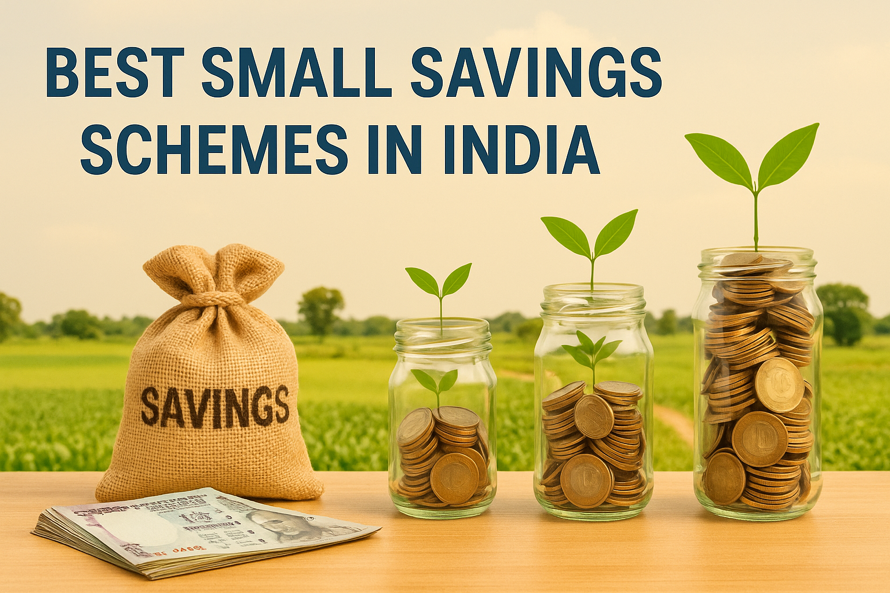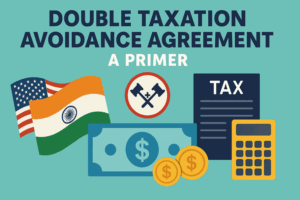
India’s small savings schemes remain a cornerstone of secure, government-backed investing—especially for risk-averse investors, retirees, and families planning for the future. For the second quarter of FY 2025–26 (July to September 2025), the Ministry of Finance has held interest rates steady across most schemes. This marks the sixth straight quarter of unchanged rates—a clear sign of the government’s strategy to offer predictability in an uncertain economic climate.
So, which schemes offer the best returns now? And how do they fit into a smart financial plan?
Quick Overview: Interest Rates for Top Small Savings Schemes (Q2 FY26)
| Scheme | Interest Rate (p.a.) | Payout | Tax Benefit |
|---|---|---|---|
| PPF | 7.1% | Annually | EEE (80C) |
| NSC | 7.7% | At Maturity | 80C |
| SSY | 8.2% | Annually | EEE (80C) |
| SCSS | 8.2% | Quarterly | 80C (Old Regime) |
| POMIS | 7.4% | Monthly | Taxable |
| KVP | 7.5% | At Maturity | Taxable |
| POTD | 6.9–7.5% | Annually | 80C (5-year only) |
| POSA | 4.0% | Annually | 80TTA/80TTB |
🔍 Why These Schemes Matter
Unlike market-linked investments like mutual funds or stocks, small savings schemes offer:
- Government backing: Your capital is safe.
- Predictable returns: Ideal for long-term planning.
- Tax perks: Many offer deductions or tax-free maturity under sections like 80C and 80TTB.
That’s why they’re a staple in Indian households—especially for those nearing retirement, saving for a child’s education, or building an emergency fund.
How to Choose the Right Scheme
Here’s how to match your financial goals to the right plan:
1. For Retirement Income
- Go with: Senior Citizen Savings Scheme (SCSS)
- Why: 8.2% quarterly payout is the highest and offers steady income for retirees.
2. For Long-Term Wealth Building
- Go with: Public Provident Fund (PPF) or Sukanya Samriddhi Yojana (SSY)
- Why: Both are tax-free under EEE. PPF suits retirement, SSY supports a girl child’s education or marriage.
3. For Short-Term Certainty
- Go with: National Savings Certificate (NSC), Kisan Vikas Patra (KVP), or Post Office Time Deposits
- Why: Fixed tenures with secure, moderate returns.
4. For Regular Income
- Go with: Post Office Monthly Income Scheme (POMIS)
- Why: Delivers a monthly payout—good for supplementary income.
5. For Emergency Funds
- Go with: Post Office Savings Account (POSA)
- Why: High liquidity, low return, but stable and accessible.
Tax Regime Considerations
A key insight this year: under the new tax regime, many of the usual deductions like 80C or 80TTB are not applicable. That means:
- For PPF or SSY, EEE benefits still apply, making them top-tier.
- For SCSS, 80C is only available under the old regime.
- KVP and POMIS offer no tax benefits but are TDS-free.
👉 Choose your scheme based on actual returns—not just the tax breaks.
What About Inflation?
Small savings schemes protect your capital, but some may lag behind inflation. For long-term goals, pair them with market-linked instruments like equity mutual funds for better real returns.
Use Calculators
Given the complexity of compounding and quarterly rate updates, tools like the PPF Calculator or NSC Calculator help you plan accurately.
Key Takeaways
- Government hasn’t changed rates for six quarters—creating a stable investment climate.
- SCSS and SSY offer the highest returns (8.2%).
- Choose schemes based on your life goals, tax regime, and need for liquidity.
- Blend these with mutual funds for a balanced, inflation-beating portfolio.
FAQs
Q: Are small savings schemes better than FDs?
A: Often yes—especially for tax benefits and long-term planning. But FDs can offer more liquidity.
Q: Can I invest in more than one scheme?
A: Absolutely. Diversification is key.
Q: Is the interest from small savings schemes taxable?
A: Depends on the scheme. Some are fully tax-free (like PPF and SSY), while others (like SCSS, NSC final year, POMIS) are taxable.







